The success of Philadelphia’s Gayborhood may be its undoing
-

-
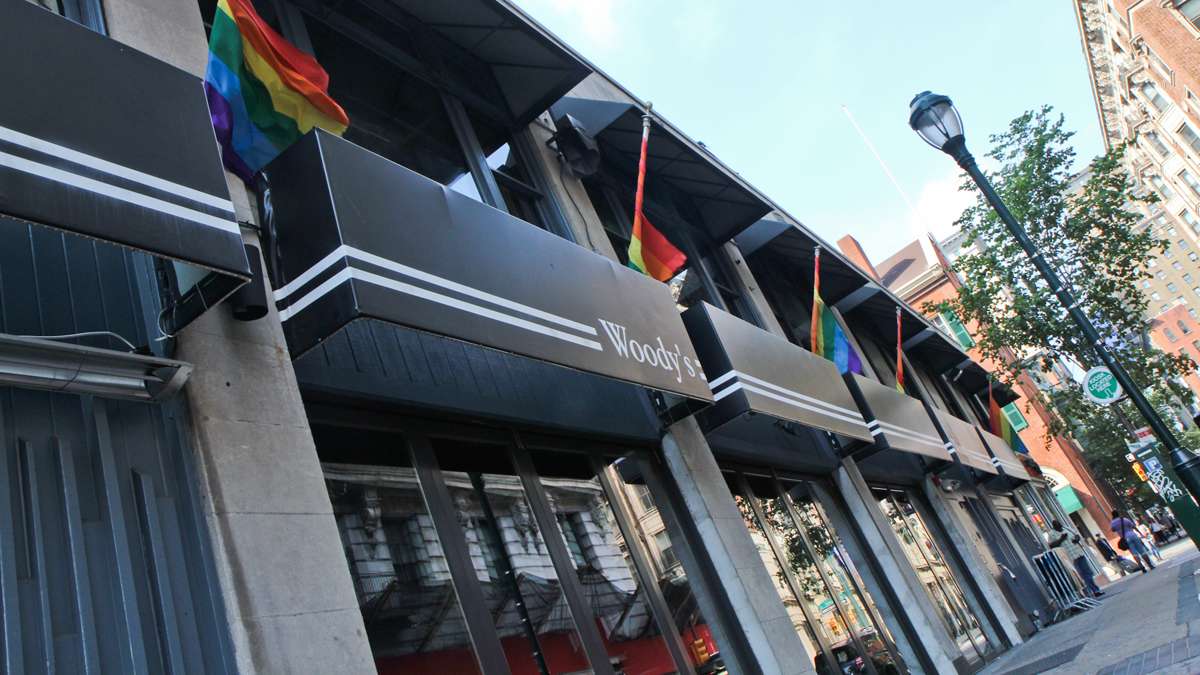
-
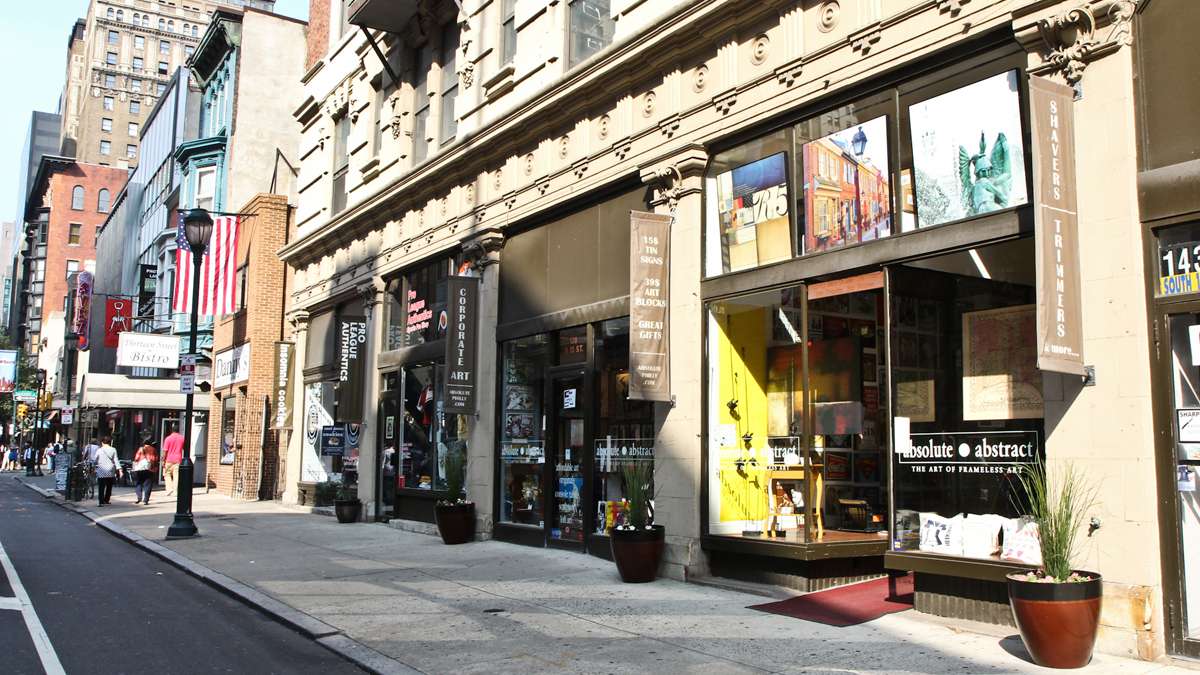
-
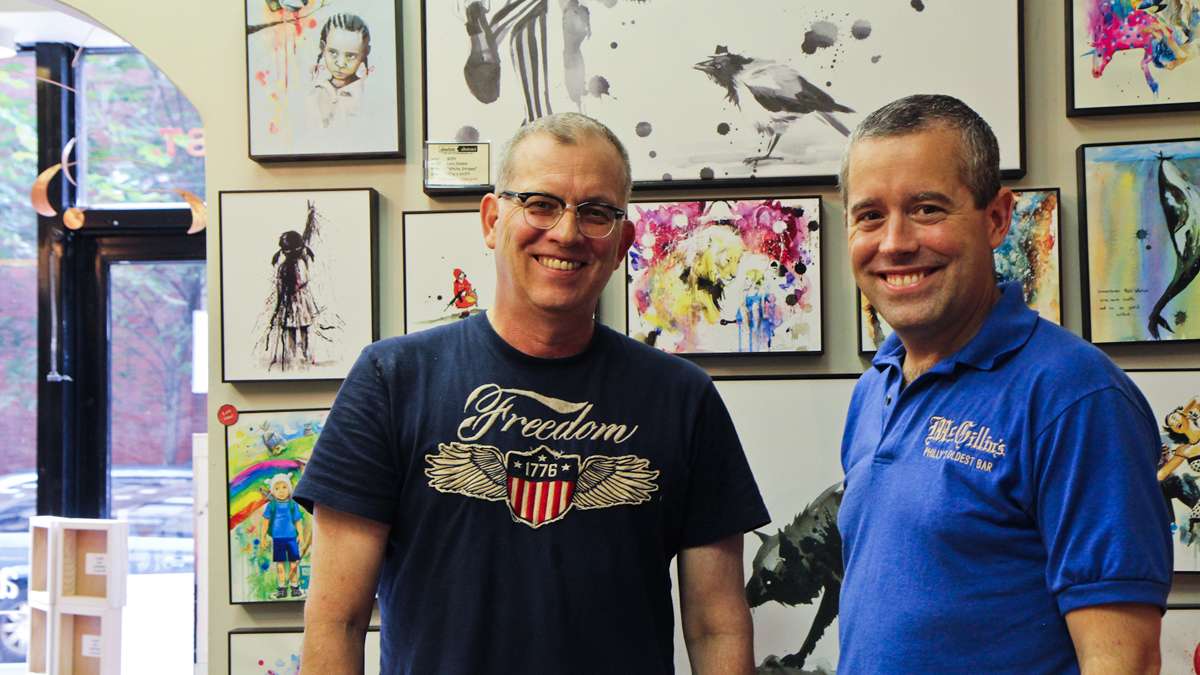
-
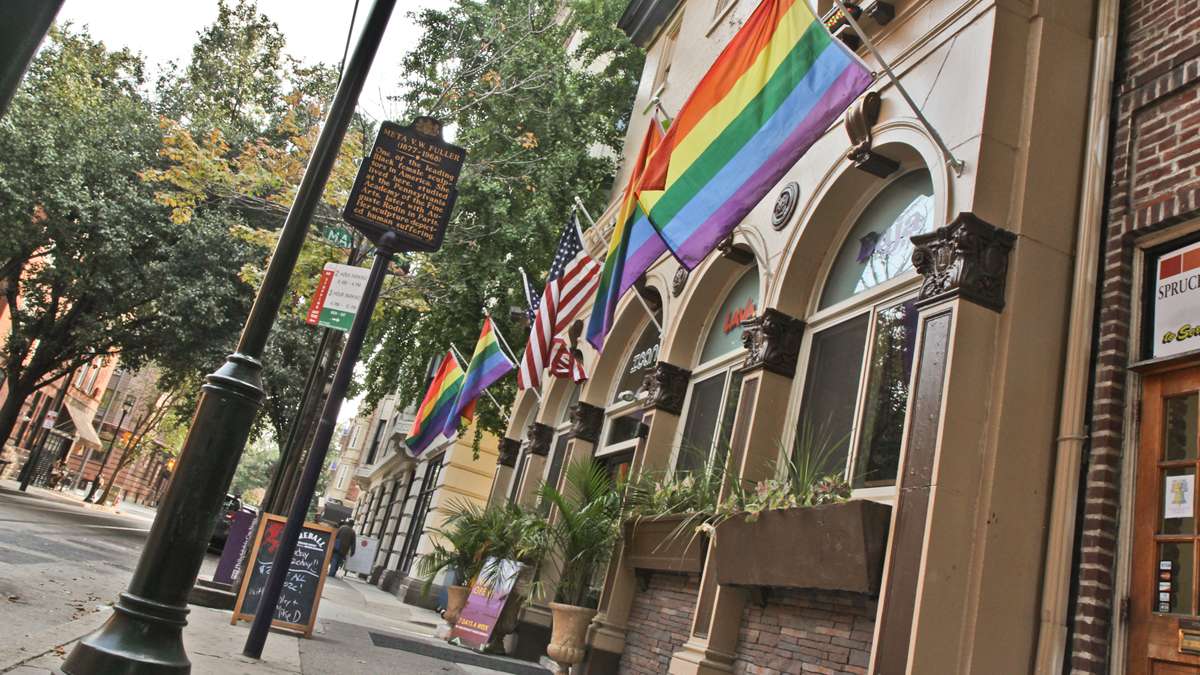
-
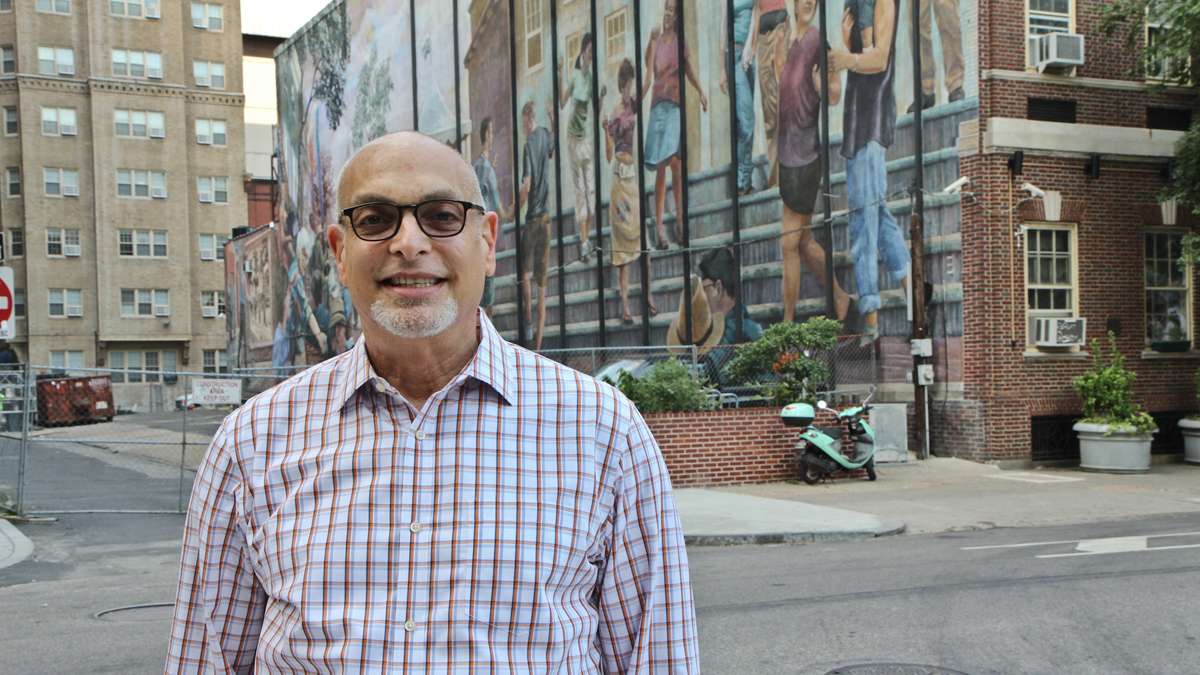
Heshie Zinman is shown in 2013 in front of the William Way LGBT Community Center at Spruce and Juniper streets in Philadelphia. (Kimberly Paynter/WHYY, file)
-

-
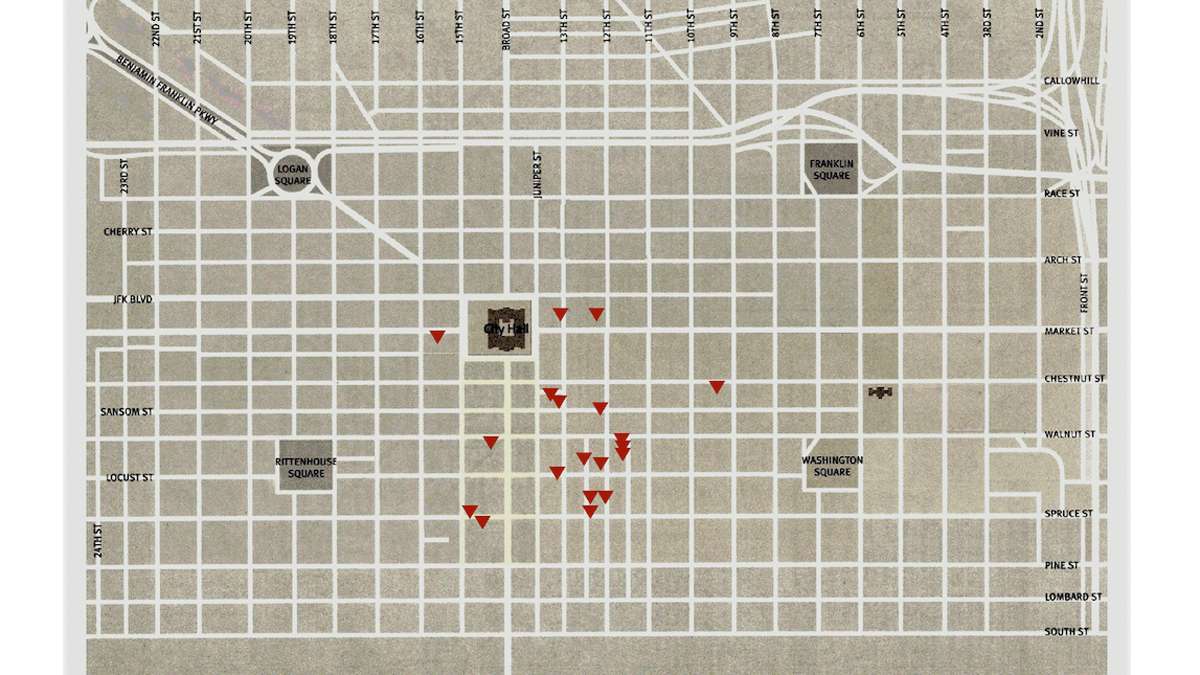
-

-

-

When Heshie Zinman moved to Center City in 1979, the gay bars had no windows, and it would be decades before they did. Center City then still functioned like a cheap refuge: It was dirty, not entirely safe, a catchment of the city’s red-light activity and its more frenetic culture, and it caught those who found their environments unlivable.
The unlivable environment for Zinman was his marriage. That year, he came out of the closet, and he moved to be with those similarly situated who found few other places to go.
This was long before rainbow-festooned street signs came to demarcate his neighborhood. It was simply the part of town where the gays were. Of the bars that peppered Rittenhouse and 12th Street, few survive today. There was Equus on 12th Street (“It was the place for brunch,” says Zinman); 247 Bar on 17th; the Cell Block upstairs from the DCA (now Voyeur), which was as dank as it sounds.
“If you look at Woody’s, they have all these windows,” says Zinman, founder of the LGBT Elder Initiative. “ICandy just went through this revival with windows. There was a time when that was unheard of. The bars were dark. They were behind brick walls. No one knew who was in there.”
“Now there isn’t a bar that doesn’t have windows,” he says. “It’s like: We’re here, we’re queer, and you’re welcome.”
A rose by any other name?
Around the time the windows came, so did a new moniker. In 2006, a group of merchants decided to rebrand the area, commonly understood by then as the Gayborhood, to reflect a new commercial vibrancy and a diminished dominance of LGBT culture.
“The area was turning, but the buzz wasn’t out there,” said James McManaman. “People were still living on this mystique that this was a bad neighborhood.”
McManaman, who is also gay, became the president of a neighborhood merchants association, and it decided to designate at least a portion of the neighborhood as Midtown Village.
New businesses like Barbuzzo and McManaman’s Absolute Abstract augmented the image that the neighborhood was no longer a concentration of vice. Within four years, “Midtown Village” had replaced “Gayborhood” on the Pennsylvania Convention and Visitors Bureau maps that populate hotels and city information centers.
Soon after, the Bureau received a call from Gloria Casarez, the mayor’s LGBT liaison, to change it back.
“We’re content to share with Midtown Village,” she tells me. “We harmoniously coexist.” But Casarez explained to the Bureau that Midtown Village only extends from Walnut to Spruce and from 12th to 13th streets and encompasses a small sub-unit of the neighborhood.
“We’re not taking away the Gayborhood,” says McManaman. “We’re just trying to create a brand that’s a welcoming moniker for travelers and merchants.”
I asked McManaman what area Midtown Village comprises.
“Well, it’s four streets,” he says. “It’s Broad to 11th and Market to Spruce.”
The Bureau’s maps currently read “Gayborhood/Midtown Village.”
Taking notice
Whether it’s a renaissance or just gentrification, and whatever the neighborhood is called, it has been received with loud fanfare, reaching the heights of the New York Times Travel section. In a July 7 feature titled “A Philadelphia Street, Transformed,” the Times referred to 13th Street as a former “waste of central Philadelphia real estate” that has since been revitalized by “‘reservations a must’ restaurants and high-end gelato shops. Sandy Smith of Philadelphia Magazine echoed the assessment and called the transformation one “from sin strip to adult playground.”
In July, Ben Finley of the Inquirer wrote on the disappearance of the suburban gay bar, which, like their urban counterparts, were long a mainstay as a respite for homosexuals at odds with intolerant settings, and which have now been subverted by both tolerance and the Internet. The Gayborhood, Finley said, has seen its own share of disappearing watering holes.
But there’s another trend where the two stories overlap: The Gayborhood itself is becoming less gay and more like the rest of Center City. The transition to Midtown Village is more than a renaming — it’s an absorption of a once tightly bound community into the indistinguishably clumped-together developer provinces that make up modern Center City.
Last week, the owner of Giovanni’s Room announced that he would be selling the store that functioned as much as an LGBT salon as it did a fated purveyor of print media. Just last month, Sisters, the city’s only lesbian bar, shut down after 17 years. Sisters was owned by Mel Heifetz, a local property owner who owns an estimated 35 rental properties in the area and the Alexander Inn on 12th and Spruce Streets.
Less gay, less interesting, less necessary
Heifetz has seen a trifecta of forces weaken both the viability and the necessity of a gay neighborhood. Increased property values make it more difficult for young, single people to populate the area. A more tolerant climate obviates the need for LGBT-designated meeting places. And the Internet obviates the need for place itself.
“When we wanted to get laid, you’d go out to a bar, you’d go on the merry go round,” he says, referring to the loop that extended down Walnut to 20th Street and back down on Spruce. “Or you’d go to Rittenhouse Square. Now, you want to get laid, you just pull out your smartphone. The last thing you need are bars now.”
Even before the Internet, the Gayborhood was on a path of contraction. Bob Skiba, president of the Association of Philadelphia Tour Guides, created four maps of Center City of self-identified LGBT businesses from 1965 to 1995. He created the maps for a 2008 panel discussion titled, “Is the rainbow over in the Gayborhood?”
According to Skiba’s maps, the Gayborhood begins with a dusting mostly east of Broad and to some extent to the west that nearly triples by 1975, reaches a peak a decade later, and by 1995 has returned to a level just over where it started, and almost entirely in the same location.
Which is to say, before smartphones and gentrification, tolerance of homosexuality was taking its toll on the Gayborhood.
“You had to live here,” says Bill Wood, the owner of Knock, and former owner of Woody’s. “You couldn’t live in South Philly and be out. You couldn’t live in the Northeast. You’d get a rock through your window. And now it’s a shame; it’s not as much fun.”
In other words, now that all the bars have windows, is what we see when we peer through them still interesting?
‘The residue of tragedy’
I moved to Laramie, Wyoming in 1999, the year after Matthew Shepard was dragged out to a field, tied to a fence and beaten to death. Laramie is small enough that my mother and I knew the man who cut him down from the fence, which separated the man’s property from a neighbor’s. My mother worked as an assistant in the counseling center at the University of Wyoming and at one point came across Shepard’s file. She didn’t read it, or if she did, she didn’t tell me what was in it. She just said that he had been there for some help.
It’s easy to pine for grit when you forget that grit is usually the residue of tragedy. The view offered by the new windows may be more staidly bourgeois, but the number of windows in the Gayborhood is inversely proportional to the chances of being beaten to death for being gay.
“I don’t feel nostalgic,” says Wood. But no sooner than he says it does he begin a nostalgic outpour. “I sort of feel bad for these kids, that they don’t know what it was like. I mean, it was kind of a ghetto. Not poor, not dirty. That clustering of people — it was more understood. You had older peopled you learned from. They may not have much interaction with people doing the same thing they are. I think they would have enjoyed it.”
Coming from Wood, it feels like more than good-ol’-days reminiscence. But it was poor and dirty. It was the inner city before the term became a euphemism. And when Wood says it, he seems to say it in defense of his home rather than as a historian. The area was borne because it was necessary, as a protective zone against violence and repression. He seems to say it from a desire to not believe that the area’s character is attached to a sense of tragedy — that happy families are not all alike.
Since March, I have pestered Inquirer architecture critic Inga Saffron over an extraordinarily poignant article she wrote for The New Republic. Saffron described the homogenizing effects of gentrification — that in fact, the greatest threat new inflows of capital pose to neighborhoods isn’t the expulsion of existing residents, but the expulsion of its character. She invoked the urbanist Jane Jacobs’ forecast that the people in the slums would “unslum” themselves and beautify their neighborhoods. “While the slums are gone,” she wrote, “the neighborhoods have not unslummed.”
It’s easy to chalk up disagreement over the geographic boundaries of Midtown Village and the Gayborhood to Philadelphian neighborhood quibbling, but it’s significant that the area couldn’t experience a financial booster shot without changing its name, or at least adding a nickname. And it’s significant that the revitalization of the Gayborhood is measured in “‘reservations a must’ restaurants” and boutiques, and that this revitalization was incompatible with a bar that had existed for 17 years.
Which isn’t to deride McManaman and his fellow merchants. It is just significant.
In 2007, the city added rainbows to the street signs on 12th and 13th Streets as a signifier of tolerance. Zinman had the same reaction as Casarez, who had the same reaction as Skiba. “Is this to mark the present state of the area, or is this to mark the history of the area?” says Skiba. “And I’m still not sure.”
WHYY is your source for fact-based, in-depth journalism and information. As a nonprofit organization, we rely on financial support from readers like you. Please give today.

